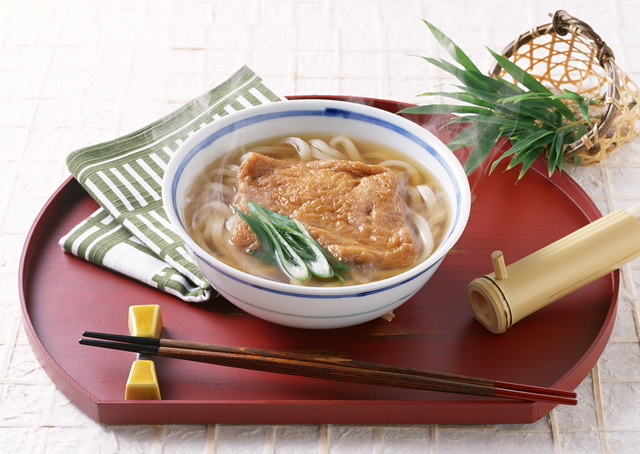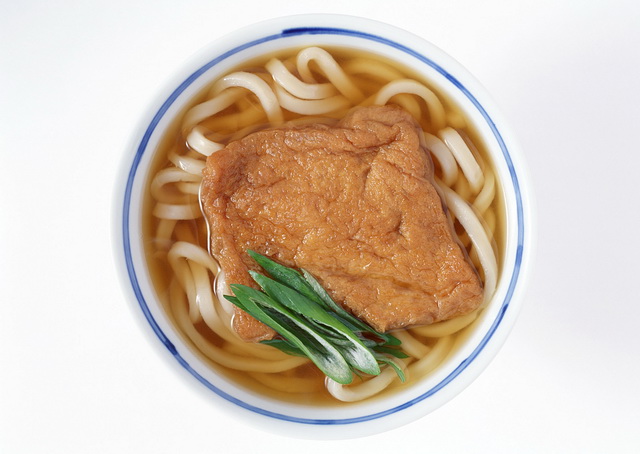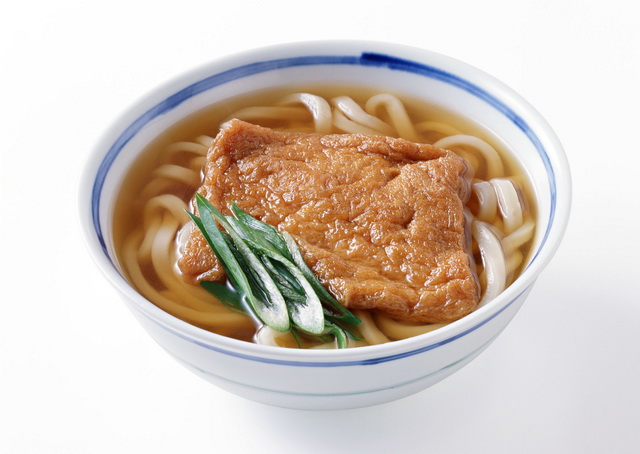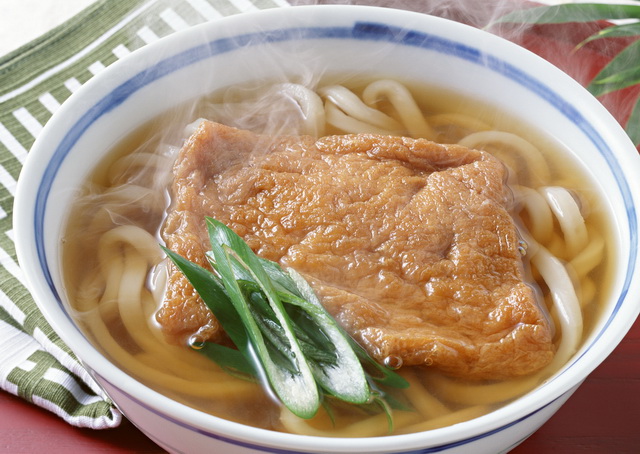An easy-cook udon recipe with beautiful dashi

Ingredients for Dashi:
1/3 cup kezurikatsuo (bonito flakes)
5 niboshi (Japanes dried baby sardines)
4 cups water
4 pieces of dashi kombu
Ingredients for Aburaage:
2 1/2 tablespoons soy sauce
10 niboshi
1 tablespoon mirin (It is similar to sake, but with a lower alcohol content)
1 tablespoon sugar
2 squares of aburaage (Aburaage is produced by cutting tofu into thin slices and deep frying first at 110~120 °C then at 180~200 °C again. You can find Aburaage in most of Chinese supermarket.)
Ingredients for Udon:
2 portion udon
2 tablespoons soy sauce
1 tablespoons mirin
1 teaspoon sugar
2 scallions cut on the bias


Method:
1. Dashi is the fundamental element of Japanese cooking. The most common form of dashi is a simple broth or stock made by boiling kombu and Kezurikatsuo and then straining the resultant liquid. But most people these days, turn to granulated or liquid instant dashi. It’s quick, cheap, and got quite same taste as granny’s of course, but can you really trust those concentrated stuff. Personally I don’t trust them, whatever they placed on ingredient. Homemade dashi really doesn’t take a long time to make. You got ten minutes? Really it’s just a pot and few ingredients. Let’s make our own dashi toady.
2. To made the dashi, boiling the 4 cups of water in a pot. Once it boils, add the rest of ingredients. Lower the fire to medium once it boils again, and maintain a gentle simmer for 6 minutes. Then turn the fire off, strain the stock into a bowl and discard the soilds.
3. For the Aburaage. Add everthing except the aburaage into a pot and bring to boil. Then add aburaage and reduce the fire to medium, flip several times until the aburaage absorb most of the liquid and its color turn to brown. Keep the cooked aburaage in a bowl. Press out the excess liquid when it’s cool enough. You don’t need to squeeze all the liquid out, just enough to keep it from being salty.
4. To cook the udon, bring some water to boil in a saucepan. Then add the udon and cook for 5 minutes (depending on what it says on your udon packet). Drain away the hot water once cooked, run under cold water. As you drain, use your hands to lift the udon gently. Leave the udon in cold water to cool then drain. (You should not overcook the udon if you don’t want them get soggy)
5. To finish it all off, put the dashi, mirin, soy sauce, sugar into a pot and heat until it comes to a boil. Add some salt if you feel like to have more. Add the udon to heat through, then divide them into two bowls. Top with the cooked aburaage and chopped scallions, and then pour the broth over everthing.

